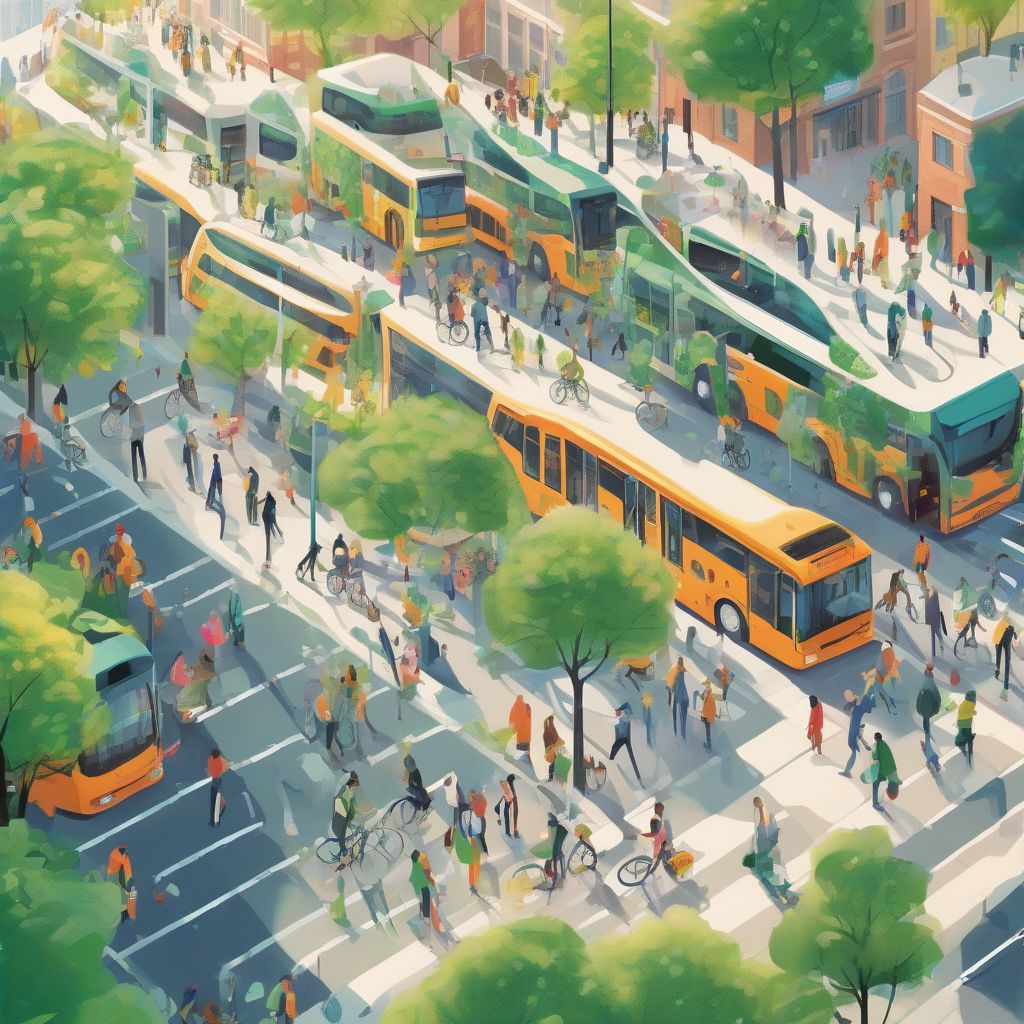Have you ever dreamt of a city where the air is clean, the streets are alive with people, and getting around is a breeze? This isn’t a utopia; it’s the potential future of sustainable transportation. Creating a sustainable transportation plan for your city isn’t just about swapping gas-guzzlers for electric cars. It’s about weaving together a tapestry of options that benefit everyone, from the daily commuter to the environment.
Understanding Sustainable Transportation
Before diving into the “how,” let’s clarify the “what.” Sustainable transportation is about reducing our reliance on private vehicles and embracing options that minimize environmental impact, improve public health, and enhance community living. Think electric buses, safe bike lanes, walkable neighborhoods, and efficient train systems.
Key Elements of a Sustainable Transportation Plan
A successful plan is like a well-balanced meal, incorporating diverse elements:
1. Prioritize Active Transportation:
Walking and cycling aren’t just good for you; they’re good for the planet. A sustainable plan prioritizes:
- Pedestrian-friendly infrastructure: Think wider sidewalks, well-lit crosswalks, and dedicated bike lanes.
- Safe Routes to Everyday Destinations: Schools, parks, and shopping centers should be easily accessible without needing a car.
2. Enhance Public Transportation:
A robust public transportation system is the backbone of sustainable transportation. This includes:
- Reliable and Frequent Service: No one wants to wait an hour for the next bus. Frequent, reliable service encourages public transit use.
- Integrated Networks: Seamless connections between buses, trains, and trams make journeys smoother and encourage people to ditch their cars.
- Electric Fleets: Transitioning to electric buses and trains drastically reduces emissions and noise pollution.
3. Embrace Shared Mobility:
Car-sharing programs and bike-sharing schemes reduce the need for individual car ownership.
- Promote Carpooling and Ride-Hailing: Encourage shared rides through designated lanes and incentives.
- Invest in Bike-Sharing Programs: Conveniently located bike stations allow people to easily hop on a bike for short trips.
4. Integrate Smart Technology:
Technology can optimize traffic flow, reduce congestion, and enhance the efficiency of existing systems.
- Smart Traffic Management Systems: Adaptive traffic signals adjust to real-time conditions, reducing congestion and wait times.
- Real-Time Information Systems: Provide passengers with up-to-date information on arrival and departure times, making public transportation more appealing.
5. Promote Sustainable Urban Planning:
Creating walkable, mixed-use neighborhoods where people can live, work, and play without relying on cars is crucial.
- Compact City Design: High-density living reduces sprawl and makes walking and cycling more practical.
- Mixed-Use Development: Integrating residential, commercial, and recreational spaces within walking distance reduces car dependency.
 Sustainable City Transportation
Sustainable City Transportation
Engaging the Community
A sustainable transportation plan isn’t something imposed from above; it requires community buy-in.
- Public Consultations: Gather input from residents about their needs, concerns, and ideas.
- Educational Campaigns: Highlight the benefits of sustainable transportation and encourage behavioral shifts.
- Partnerships: Collaborate with businesses, schools, and community organizations to promote sustainable commuting options.
The Benefits of Sustainable Transportation
The payoff for embracing sustainable transportation is multifaceted:
- Environmental Protection: Reduced emissions mean cleaner air, combating climate change, and improving public health.
- Healthier Lives: Walking and cycling improve cardiovascular health and reduce the risk of chronic diseases.
- Economic Advantages: Reduced congestion saves time and money for individuals and businesses. Investment in public transportation creates jobs and stimulates the economy.
- Enhanced Quality of Life: Walkable neighborhoods foster a sense of community, reduce noise pollution, and create more vibrant public spaces.
Conclusion
Creating a sustainable transportation plan for your city isn’t just about changing how we move; it’s about transforming our relationship with our environment and each other. It requires a holistic approach, community engagement, and a commitment to long-term vision. By embracing sustainable transportation, we can create cities that are not only efficient and environmentally friendly but also healthier, more livable, and more prosperous for all.
What steps can you take today to advocate for sustainable transportation in your community? Share your thoughts in the comments below!
[amazon bestseller=”Urban Planning Books”]
